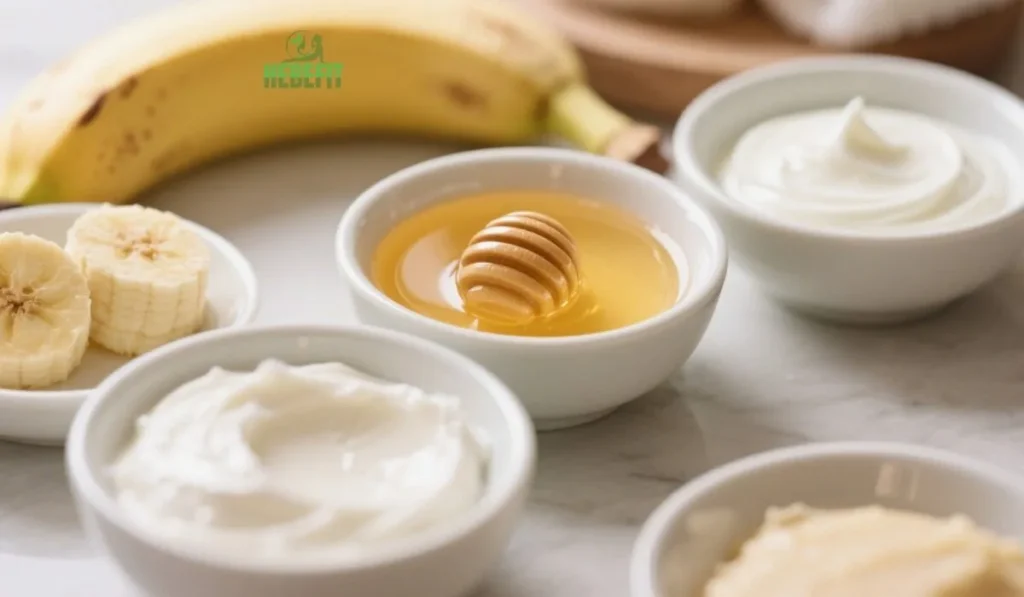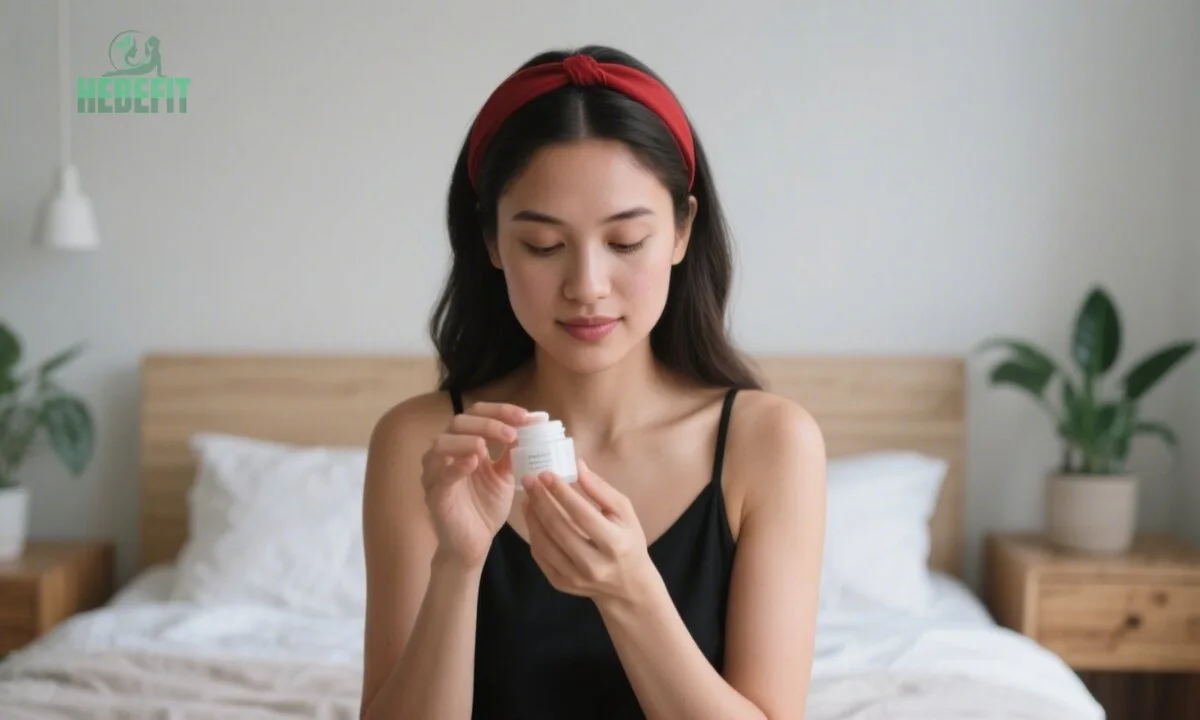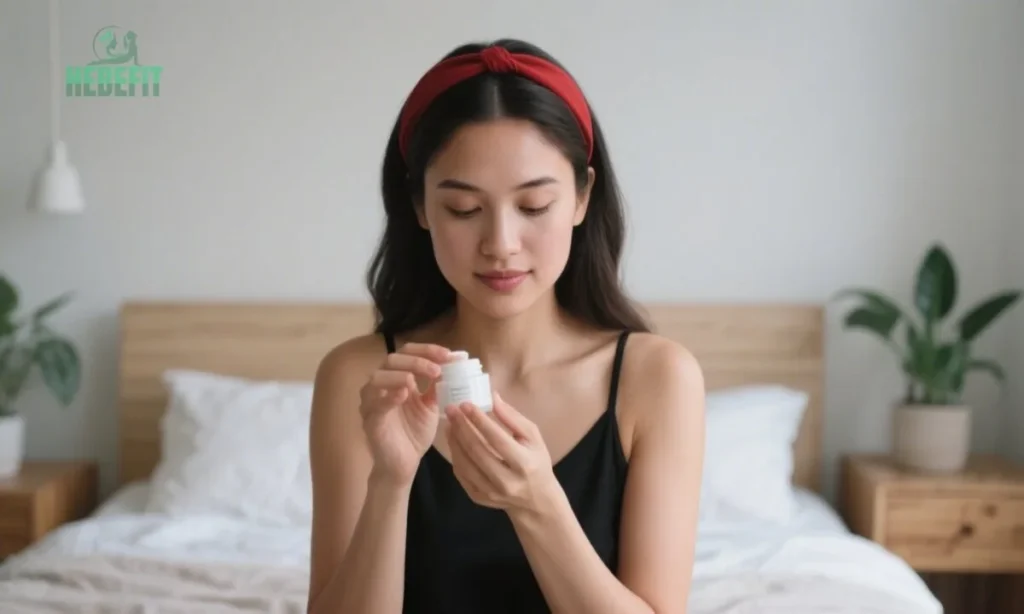Is your hair crying out for help? If you’re battling dryness, brittleness, split ends or a general lack of luster, you’re not alone. Daily stressors, heat styling and environmental factors can take a toll, leaving your locks looking less than their best. But before you reach for expensive salon treatments, consider the power of a natural hair mask for damaged hair. These homemade concoctions are not only effective but also kind to your hair and wallet. In this guide, we’ll explore everything you need to know about creating and using a natural hair mask for damaged hair, transforming your tresses from distressed to dazzling. Get ready to unlock the secrets to revitalized, healthy hair with a simple, effective natural hair mask for damaged hair!

Why Bother with a Natural Hair Mask for Damaged Hair?
You might be wondering, with so many commercial products available, why opt for a natural hair mask for damaged hair? The answer lies in their simplicity, purity, and effectiveness.
Gentle on Your Hair and Scalp
Commercial hair products often contain harsh chemicals like sulfates, parabens, and silicones. While they might offer a temporary fix, these ingredients can strip your hair of its natural oils, leading to more damage in the long run, and can sometimes irritate the scalp. A natural hair mask for damaged hair, on the other hand, uses ingredients straight from nature – think nourishing oils, fruits, and dairy – which are generally gentler and less likely to cause adverse reactions.
Customizable to Your Specific Needs
One of the biggest advantages of a DIY natural hair mask for damaged hair is its customizability. Is your hair extremely dry? Add more oils or shea butter. Lacking shine? Honey and apple cider vinegar could be your best friends. Dealing with breakage? Protein-rich ingredients like egg or yogurt can help. You become the chemist, tailoring the mask perfectly to what your hair craves.
Cost-Effective Beauty
Let’s be honest, salon treatments and high-end hair masks can be pricey. Creating your own natural hair mask for damaged hair using ingredients likely already in your kitchen or easily accessible at a local grocery store is significantly more budget-friendly. Healthy hair doesn’t have to break the bank!
Empowering and Fun!
There’s something incredibly satisfying about creating your own beauty treatments. Whipping up a natural hair mask for damaged hair can be a fun, relaxing ritual, and knowing exactly what you’re putting on your hair is empowering. Plus, the delightful natural scents are an added bonus!
Unveiling the Best Natural Ingredients for Damaged Hair
Before we dive into recipes, let’s understand what makes certain natural ingredients so potent for repairing and rejuvenating damaged hair. Knowledge is power, especially when it comes to choosing the right components for your natural hair mask for damaged hair.
The Power Players: Key Ingredients & Their Magic
- Oils (Coconut, Olive, Argan, Almond, Jojoba):
- Coconut Oil: Penetrates the hair shaft to moisturize from within, reduces protein loss.
- Olive Oil: Rich in fatty acids and antioxidants, adds shine, softness, and resilience.
- Argan Oil: Packed with Vitamin E and fatty acids, tames frizz, hydrates, and protects.
- Almond Oil: Lightweight, rich in Vitamin E, B, and A, strengthens and repairs.
- Jojoba Oil: Closely mimics scalp’s natural sebum, balances oil production, moisturizes.
- Butters (Shea, Cocoa):
- Shea Butter: Deeply moisturizing, seals in hydration, soothes dry scalp, excellent for very dry or coarse hair.
- Cocoa Butter: Rich emollient, helps to improve elasticity and manageability.
- Fruits (Avocado, Banana):
- Avocado: Loaded with vitamins (A, D, E, B6), proteins, amino acids, and healthy fats that deeply nourish and repair.
- Banana: Rich in potassium, natural oils, carbohydrates, and vitamins, helps soften hair, protect natural elasticity, and prevent split ends and breakage.
- Dairy & Protein (Yogurt, Egg):
- Yogurt (Plain, Unsweetened): Lactic acid cleanses the scalp, while fats moisturize. Probiotics can promote scalp health.
- Egg (Especially Yolk): Packed with proteins, fats, and lecithin, which help strengthen hair, add shine, and condition.
- Other Heroes (Honey, Aloe Vera, Apple Cider Vinegar):
- Honey (Raw): A natural humectant, draws moisture into the hair, has antibacterial properties.
- Aloe Vera Gel: Soothes the scalp, conditions hair, reduces dandruff, promotes hair growth due to its enzymes.
- Apple Cider Vinegar (Diluted): Clarifies, balances pH, seals cuticles for shine (use sparingly and always diluted).

Top 7 DIY Recipes for a Natural Hair Mask for Damaged Hair
Ready to get mixing? Here are seven tried-and-true recipes for a natural hair mask for damaged hair. Remember to adjust quantities based on your hair length and thickness. Always do a patch test for any new ingredient to ensure no allergic reaction.
- The Ultimate Hydrator: Avocado & Olive Oil Mask
- Ingredients: 1 ripe avocado, 2 tablespoons olive oil, 1 tablespoon honey (optional).
- Best For: Extremely dry, brittle hair.
- Why it Works: Avocado provides deep nourishment, while olive oil seals in moisture and honey adds extra hydration and shine.
- The Strength Builder: Banana & Egg Yolk Mask
- Ingredients: 1 ripe banana, 1 egg yolk, 1 tablespoon coconut oil.
- Best For: Weak, breakage-prone hair.
- Why it Works: Banana improves elasticity, egg yolk provides protein for strength, and coconut oil conditions.
- The Shine Enhancer: Yogurt & Honey Mask
- Ingredients: ½ cup plain yogurt, 2 tablespoons honey, 1 teaspoon lemon juice (optional, for oily scalp).
- Best For: Dull, lifeless hair needing a shine boost.
- Why it Works: Yogurt gently cleanses and conditions, honey attracts moisture and imparts shine.
- The Frizz Fighter: Coconut Oil & Aloe Vera Mask
- Ingredients: 3 tablespoons coconut oil (melted), 4 tablespoons aloe vera gel.
- Best For: Frizzy, unmanageable hair.
- Why it Works: Coconut oil smooths the cuticle, while aloe vera hydrates and defines.
- The Deep Repair: Shea Butter & Argan Oil Mask
- Ingredients: 2 tablespoons shea butter (melted), 1 tablespoon argan oil, a few drops of lavender essential oil (optional, for scent and scalp benefits).
- Best For: Severely damaged, chemically treated, or very coarse hair.
- Why it Works: Shea butter offers intense moisture, while argan oil repairs and protects.
- The Scalp Soother: Oatmeal & Almond Milk Mask
- Ingredients: ½ cup cooked plain oatmeal (cooled), ¼ cup almond milk, 1 tablespoon almond oil.
- Best For: Sensitive or irritated scalp, dry hair.
- Why it Works: Oatmeal is soothing, almond milk and oil provide gentle hydration.
- The Clarifying Refresher: Apple Cider Vinegar & Green Tea Rinse (More of a rinse, but preps for masks)
- Ingredients: 1 cup brewed green tea (cooled), 2 tablespoons Apple Cider Vinegar.
- Best For: Hair with product buildup, before applying a deep conditioning mask.
- Why it Works: ACV clarifies and balances pH, green tea is rich in antioxidants. Use after shampoo and before your conditioning mask.
Quick Recipe Comparison
| Mask Name | Key Ingredients | Primary Benefit | Hair Type Suitability |
| Ultimate Hydrator | Avocado, Olive Oil | Deep Moisturization | Very Dry, Brittle |
| Strength Builder | Banana, Egg Yolk | Strengthens, Reduces Breakage | Weak, Prone to Breakage |
| Shine Enhancer | Yogurt, Honey | Adds Shine, Softens | Dull, Lifeless |
| Frizz Fighter | Coconut Oil, Aloe Vera | Tames Frizz, Smooths | Frizzy, Unmanageable |
| Deep Repair | Shea Butter, Argan Oil | Intense Repair, Moisture | Severely Damaged, Coarse |
| Scalp Soother | Oatmeal, Almond Milk | Soothes Scalp, Hydrates | Sensitive Scalp, Dry Hair |
| Clarifying Refresher | ACV, Green Tea | Clarifies, pH Balance | All types with buildup |
Your Step-by-Step Guide: How to Apply a Natural Hair Mask for Damaged Hair
Applying your natural hair mask for damaged hair correctly is crucial to reap all its benefits. It’s not just about slathering it on; it’s about ensuring every strand gets the love it deserves.
Preparation is Key
- Gather Your Supplies: Your chosen mask ingredients, a mixing bowl (non-metallic if using ingredients like bentonite clay, though not featured in these recipes), a mixing spoon/whisk, an old towel to protect your clothes, and a shower cap or plastic wrap.
- Hair Prep: It’s generally best to apply masks to clean, damp hair. Shampoo your hair as usual (a gentle, sulfate-free shampoo is ideal), then towel dry it until it’s damp, not soaking wet. This allows the mask to penetrate better. Some oil-based masks can be applied to dry hair, but for general damage repair, damp hair is preferred.
- Detangle: Gently detangle your hair with a wide-tooth comb. This makes application easier and ensures even distribution.
The Application Process – A Ritual of Care
- Section Your Hair: Divide your hair into 4-6 manageable sections using clips. This ensures you don’t miss any spots.
- Start at the Roots (or Ends, Depending on Focus):
- For overall damage or scalp concerns: Start applying the mask near your scalp and work your way down to the ends.
- If your ends are the primary concern: Concentrate the mask on the mid-lengths and ends first, then work any remainder upwards.
- Massage It In: As you apply the natural hair mask for damaged hair to each section, use your fingertips to gently massage it into your hair strands and scalp (if applicable). This helps with absorption and stimulates blood flow to the scalp. Ensure every strand is coated.
- Pile and Cover: Once your entire head is covered, gently pile your hair on top of your head (you can use a loose clip if needed) and cover it with a shower cap or plastic wrap. This traps heat, which helps the ingredients penetrate deeper.

The Waiting Game – Let the Magic Happen
- Timing is Everything: Most natural hair masks need about 20-30 minutes to work their magic. Some heavier, oil-based masks can be left on for an hour or even overnight (if comfortable and your hair is extremely dry). Refer to specific recipe suggestions if available.
- Optional Heat Boost: You can gently warm your covered head with a hairdryer on a low setting for a few minutes or wrap a warm, damp towel around your shower cap to enhance penetration.
Rinsing Out Thoroughly
- Use Lukewarm Water: Rinse the mask out thoroughly with lukewarm water. Hot water can strip moisture and potentially cook ingredients like egg in your hair (not pleasant!).
- Be Patient: Some masks, especially those with oils or banana, can take a bit longer to rinse out completely. Make sure no residue is left behind, as this can weigh hair down.
- Follow with Conditioner (Optional): Depending on the mask and your hair type, you might want to follow up with a light conditioner, especially on the ends, to seal the cuticle further. Some find the mask itself conditioning enough.
Post-Mask Care
- Gentle Towel Dry: Pat your hair gently with a microfiber towel or an old t-shirt to reduce friction and frizz.
- Air Dry if Possible: Give your hair a break from heat styling. Let it air dry to see the full benefits of your natural hair mask for damaged hair.
- Frequency: For damaged hair, using a mask 1-2 times a week is generally beneficial. Adjust based on your hair’s response.
Step-by-Step Application Checklist
| Step | Action | Tip |
| 1. Prepare | Gather supplies, shampoo & towel-dry hair, detangle. | Clean, damp hair absorbs best. |
| 2. Section | Divide hair into 4-6 sections. | Ensures even coverage. |
| 3. Apply | Apply mask from roots to ends (or ends first), massage gently. | Coat every strand. |
| 4. Cover | Pile hair, cover with shower cap/plastic wrap. | Traps heat for better penetration. |
| 5. Wait | Leave on for 20-30 minutes (or as per recipe). | Use gentle heat for a boost. |
| 6. Rinse | Rinse thoroughly with lukewarm water. | Ensure no residue remains. |
| 7. Condition (Optional) | Apply a light conditioner if needed. | Seals the cuticle. |
| 8. Dry Gently | Pat with microfiber towel, air dry if possible. | Minimize heat damage. |
The Amazing Benefits of Regularly Using a Natural Hair Mask for Damaged Hair
We’ve touched on why to use them and how to use them, but let’s really celebrate the transformative benefits you can expect when you incorporate a natural hair mask for damaged hair into your routine.
Deep Conditioning and Unparalleled Hydration
This is perhaps the most immediate and noticeable benefit. Natural ingredients like oils, butters, avocado, and honey are powerhouses of hydration. They penetrate the hair shaft, replenishing lost moisture, making your hair feel significantly softer, smoother, and more supple. Say goodbye to that straw-like texture!
Repairing Damage and Reducing Breakage
Damaged hair often means a compromised hair cuticle and weakened protein structure. Ingredients like eggs (protein), bananas (potassium and natural oils), and nourishing oils help to:
- Fill in gaps in the hair cuticle.
- Strengthen the hair shaft from within.
- Improve elasticity, making hair less prone to snapping and breaking.
Consistent use helps to visibly reduce split ends and flyaways.
Enhancing Shine and Softness
Dull hair is often a sign of a rough, open cuticle that doesn’t reflect light well. A natural hair mask for damaged hair helps to smooth down the cuticle layer. Ingredients like honey, yogurt, and apple cider vinegar (in rinses) are particularly good at this, resulting in hair that not only feels incredibly soft but also boasts a radiant, healthy shine.
Soothing the Scalp and Potentially Promoting Growth
A healthy scalp is the foundation for healthy hair. Many natural ingredients have benefits beyond the strands themselves:
- Aloe Vera and Oatmeal: Soothe irritation, itching, and inflammation.
- Coconut Oil and Tea Tree Oil (add a drop to masks): Have antifungal and antibacterial properties, helpful for dandruff.
- Scalp Massage during application: Stimulates blood flow, which can encourage healthier hair growth.
Cost-Effective and Free from Harsh Chemicals
We’ve mentioned it before, but it’s a huge benefit worth repeating. You’re nourishing your hair with pure, wholesome ingredients without the hefty price tag or the worry of synthetic chemicals causing further damage or buildup over time. It’s a win-win for your hair and your budget.
Complementary Hair Care Habits for Damaged Hair
While a natural hair mask for damaged hair is a fantastic tool, supporting its effects with other healthy hair habits will maximize your results.
| Habit | Why It Helps | Hebefit Tip |
| Minimize Heat Styling | Excessive heat is a primary cause of damage. | Embrace air-drying; use heat protectant when styling. Explore our no-heat styles! |
| Gentle Cleansing | Harsh shampoos strip natural oils. | Choose sulfate-free shampoos; don’t overwash. |
| Balanced Diet & Hydration | Hair health starts from within. | Eat nutrient-rich foods; drink plenty of water. Check our nutrition articles! |
| Regular Trims | Removes split ends, preventing them from traveling up the hair shaft. | Get a trim every 6-8 weeks. |
| Protect from Elements | Sun, wind, and pollution can damage hair. | Wear a hat in strong sun; use leave-in conditioners. |
| Silk or Satin Pillowcase | Reduces friction, preventing breakage and frizz while you sleep. | An easy switch for healthier hair! |
By combining these practices with your regular natural hair mask for damaged hair treatments, you’ll be well on your way to the luscious locks you’ve always dreamed of. Keep an eye on Hebefit.com for more in-depth articles on each of these topics!
Final Thoughts: Embrace Your Natural Hair Journey
Revitalizing damaged hair doesn’t require a complex arsenal of expensive products. The solution might just be waiting in your kitchen! By understanding the power of natural ingredients and dedicating a little time to self-care, you can create a natural hair mask for damaged hair that delivers visible, tangible results.
Remember, consistency is key. Make this a regular part of your hair care ritual, listen to your hair’s needs, and don’t be afraid to experiment with different ingredients to find what works best for you. Your journey to healthier, happier hair is a beautiful one, and embracing natural solutions is a wonderful step in that direction. We hope this guide empowers you to take control of your hair health and discover the joy of DIY hair care.
We’d love to hear about your experiences! Which natural hair mask for damaged hair is your favorite? Share your tips and transformations in the comments below! And don’t forget to explore our other articles on Hebefit.com for more holistic wellness and beauty advice.
FAQs About Natural Hair Masks for Damaged Hair
How often should I use a natural hair mask for damaged hair?
For significantly damaged hair, using a natural hair mask 1-2 times per week is ideal. As your hair’s condition improves, you can reduce this to once a week or once every two weeks for maintenance.
Can I leave a natural hair mask on overnight?
Some masks, particularly those rich in oils like coconut oil or shea butter, can be left on overnight for deep conditioning, especially if your hair is very dry or coarse. However, avoid leaving masks with ingredients like egg or apple cider vinegar on for extended periods. Always cover your hair with a shower cap and protect your pillowcase.
Do natural hair masks work for all hair types?
Yes, natural hair masks can benefit all hair types! The key is to choose ingredients that suit your specific hair concerns. For example, finer hair might prefer lighter oils and avoid overly heavy butters, while coarse or curly hair might love richer, more emollient ingredients.
How long does it take to see results from a natural hair mask?
You might notice some immediate benefits like increased softness and shine after the first use. However, for significant repair of damage, consistent use over several weeks or months is necessary. Patience and regularity are key!
Should I apply a natural hair mask to wet or dry hair?
Generally, applying a natural hair mask to clean, damp (towel-dried) hair is recommended. Damp hair cuticles are slightly open, allowing for better absorption of the mask’s nutrients. Some pure oil treatments can be applied to dry hair as a pre-shampoo treatment.
Can natural hair masks help with hair growth?
While natural hair masks primarily focus on repairing and conditioning existing hair, some ingredients and the act of massaging the scalp during application can promote a healthier scalp environment. A healthy scalp is crucial for healthy hair growth. Ingredients like aloe vera, castor oil (can be added), and rosemary essential oil (can be added) are often associated with promoting hair growth.
What’s the best way to remove a sticky natural hair mask (e.g., with honey or banana)?
Rinse thoroughly with lukewarm water first. If residue remains, you can use a gentle, diluted clarifying shampoo or follow up with a light conditioner to help break down any stickiness. Ensure bananas are very well mashed or even blended to prevent chunks.
Are there any natural ingredients I should avoid for damaged hair?
While most natural ingredients are gentle, be cautious with highly acidic ingredients like pure lemon juice or undiluted apple cider vinegar, as they can be drying if overused. Always dilute them properly. Also, if you have protein-sensitive hair, use egg masks sparingly, as too much protein can make some hair types brittle.










